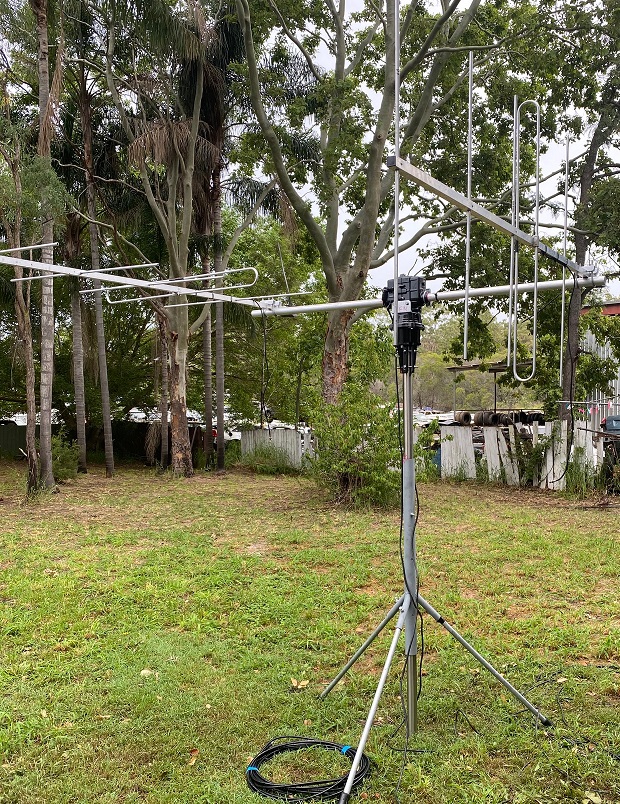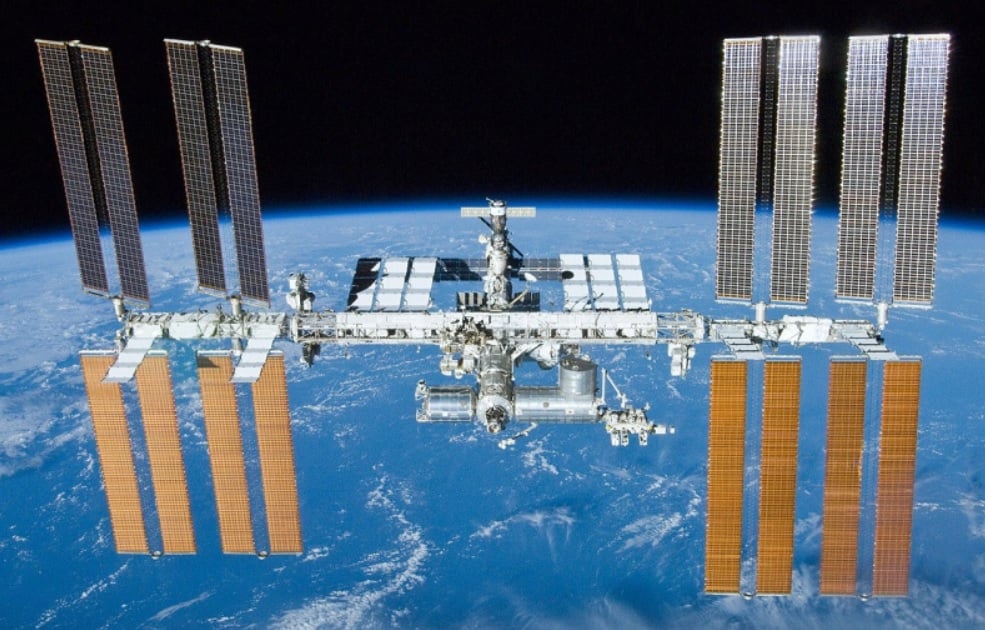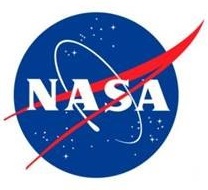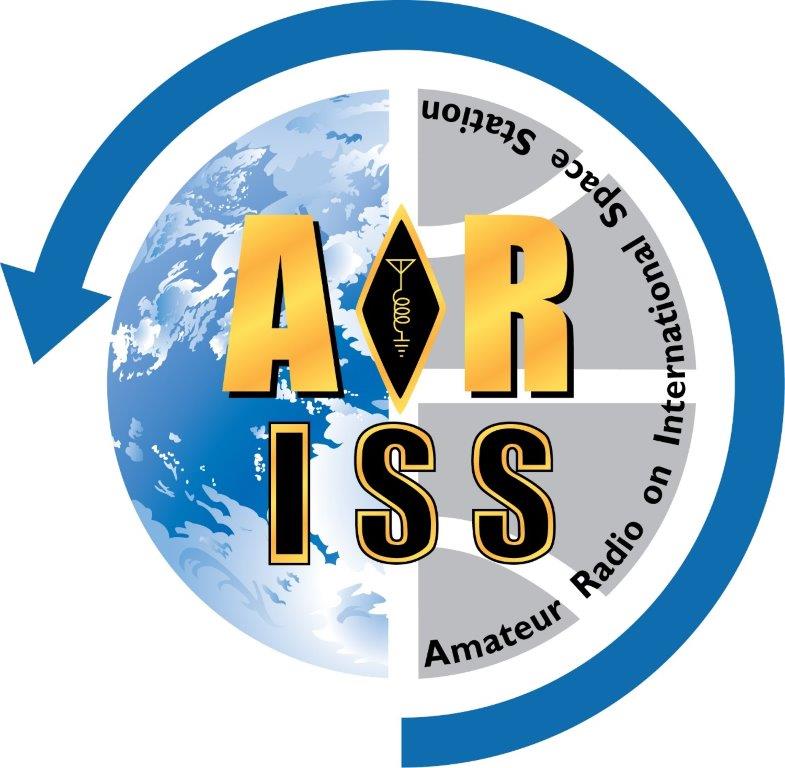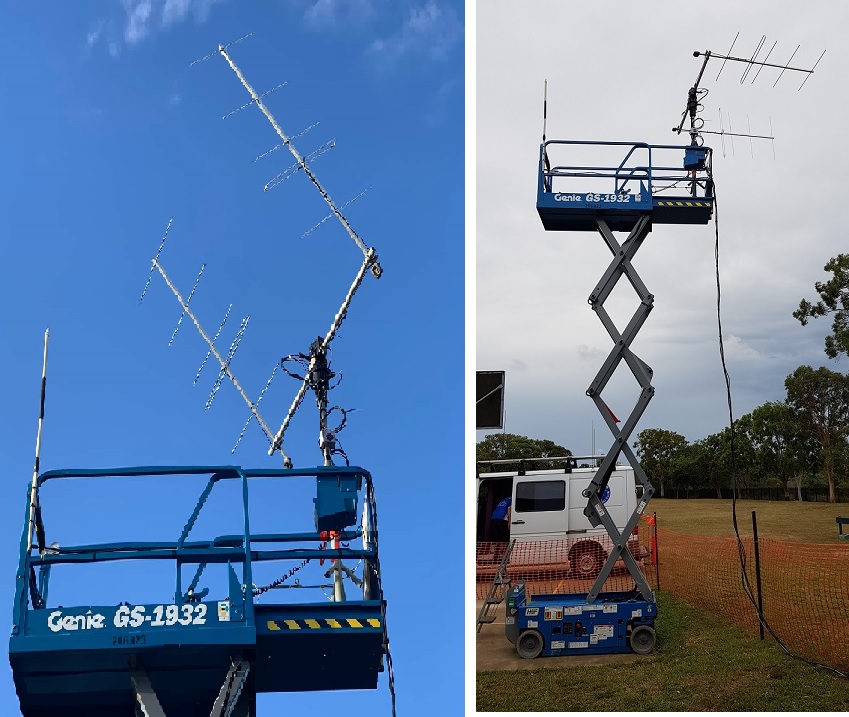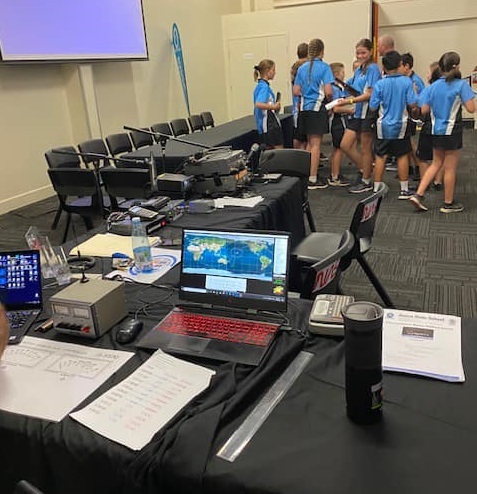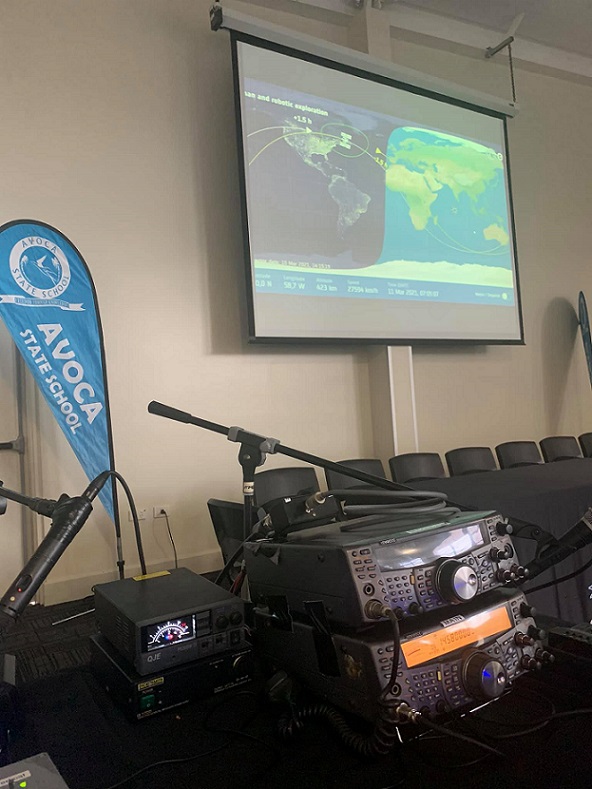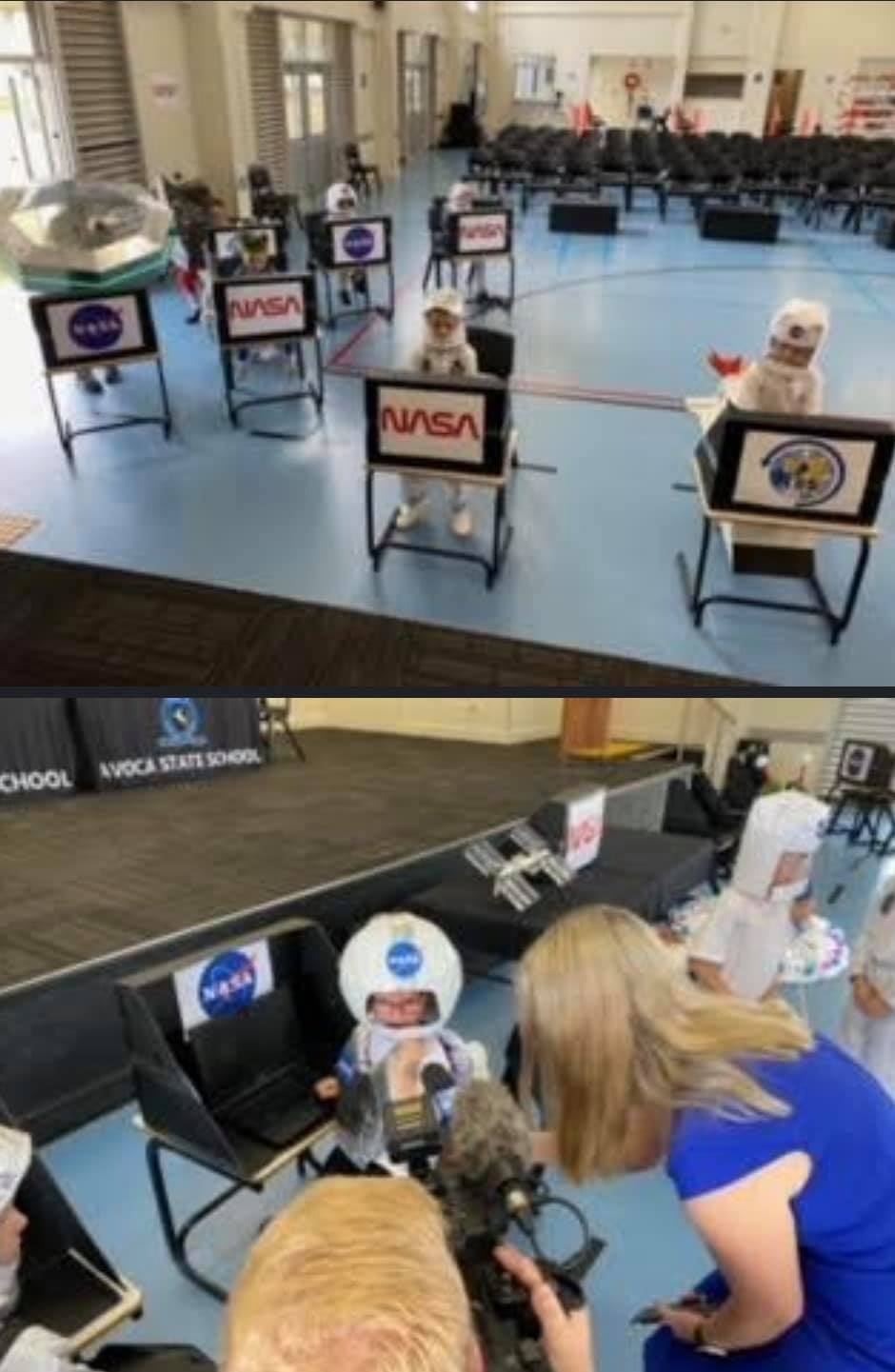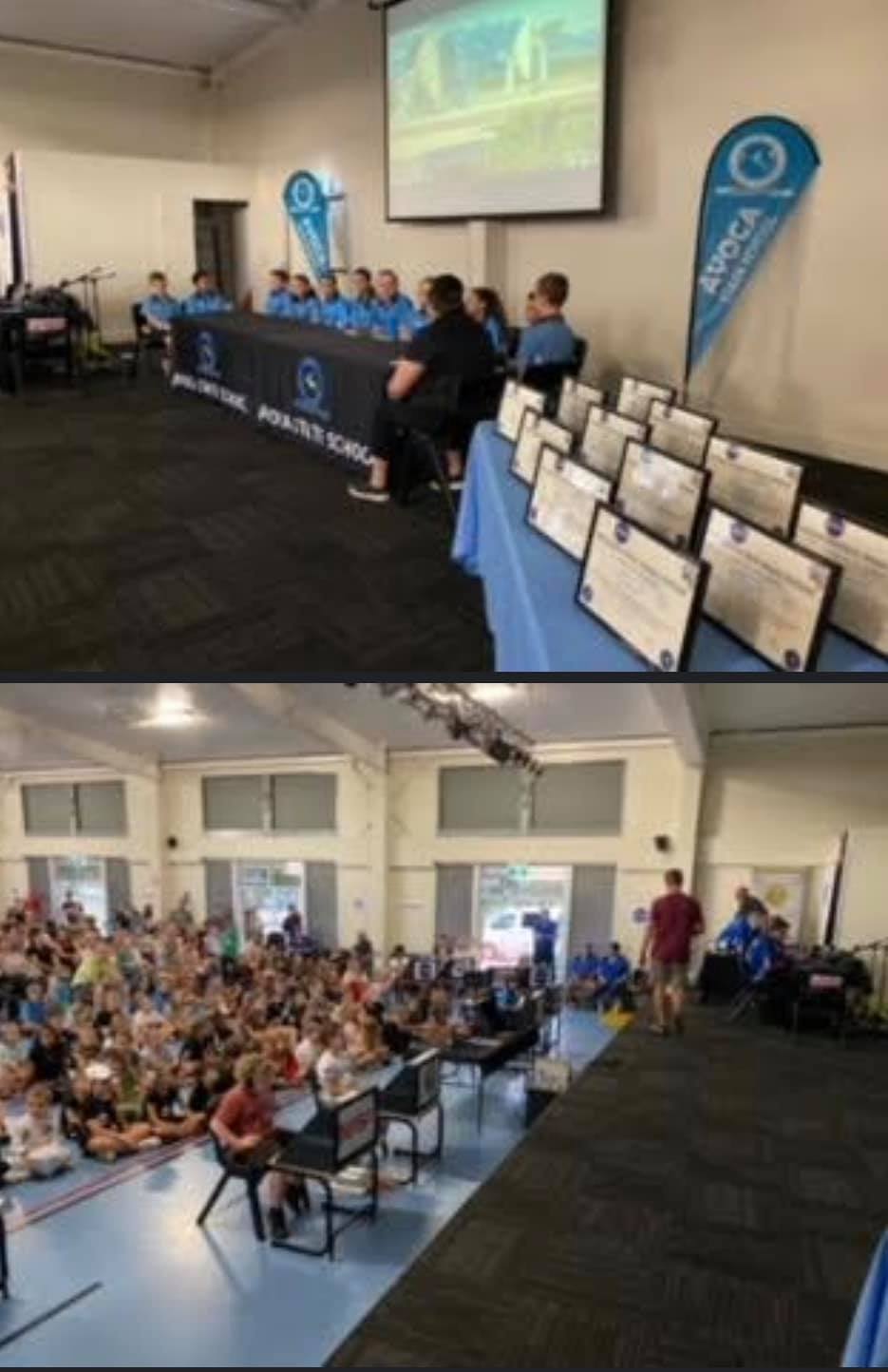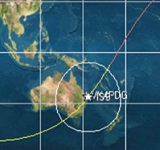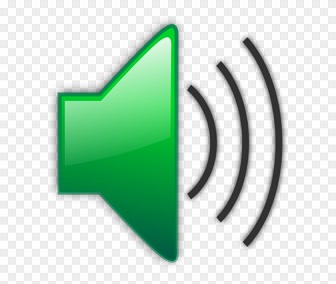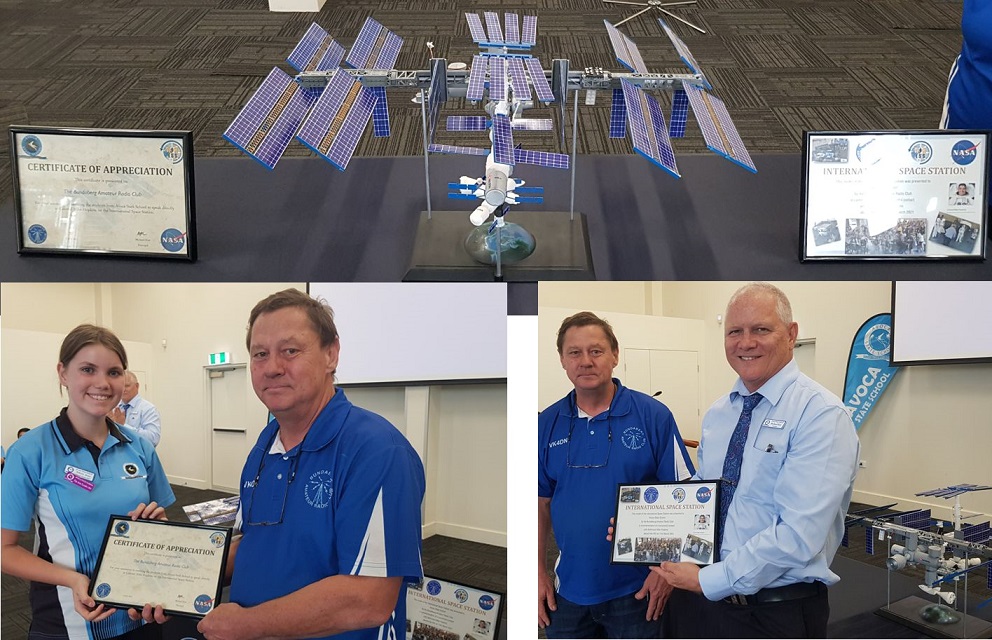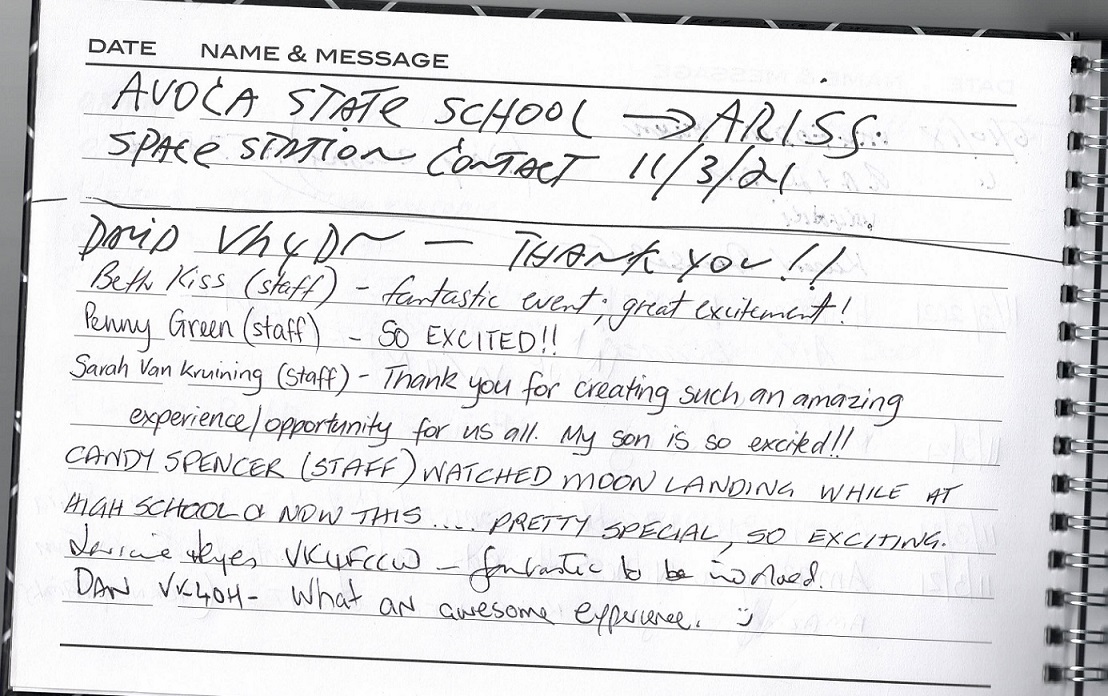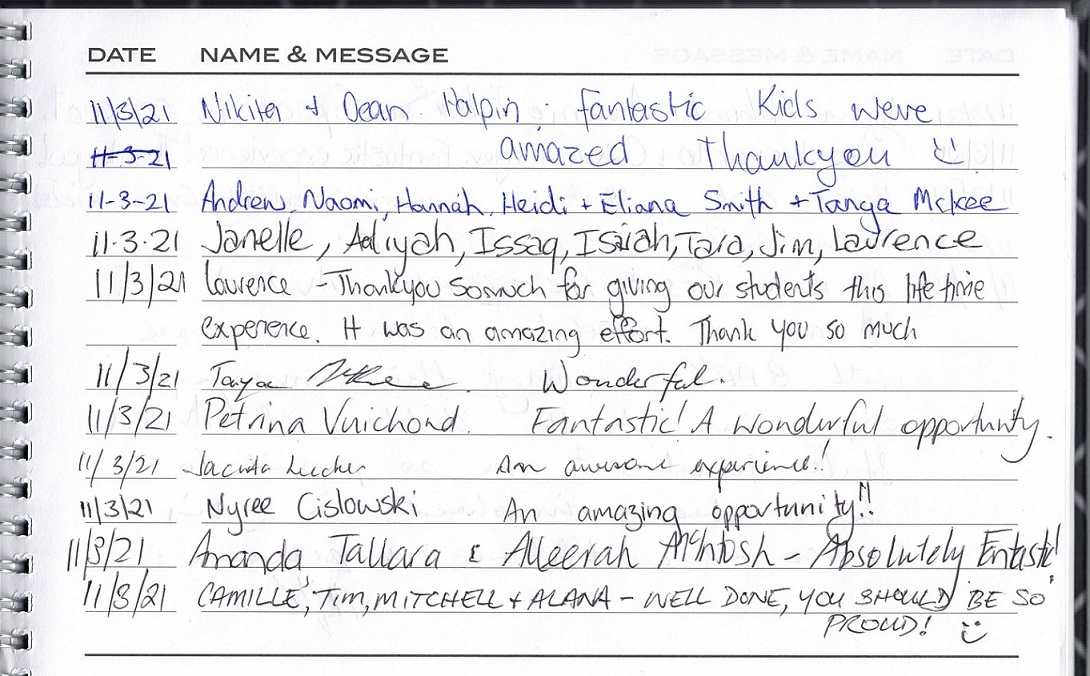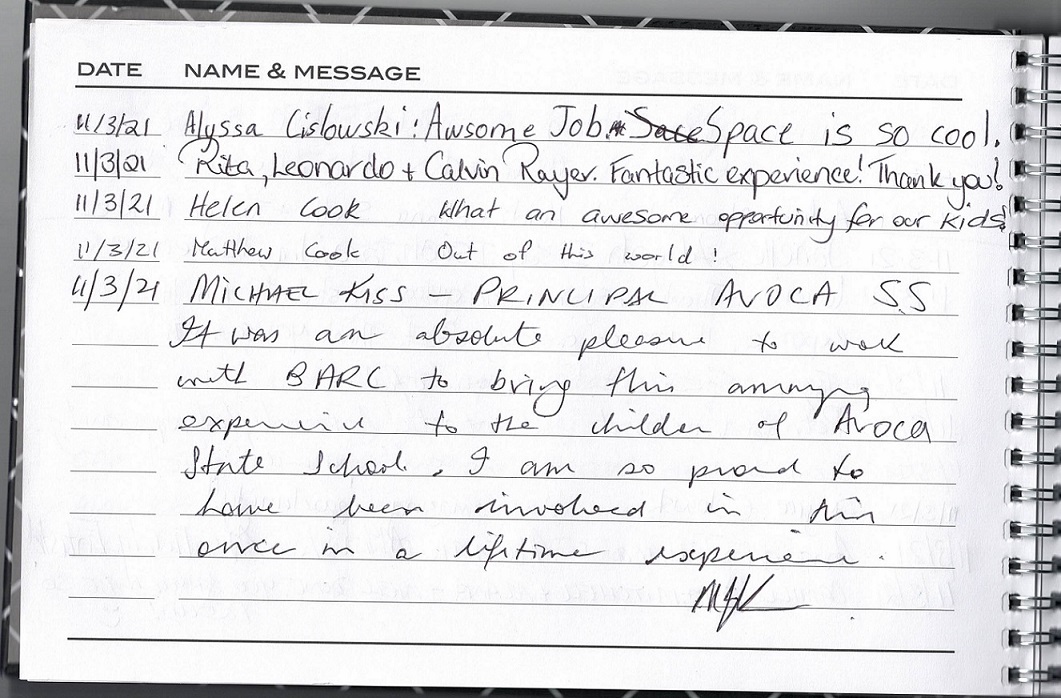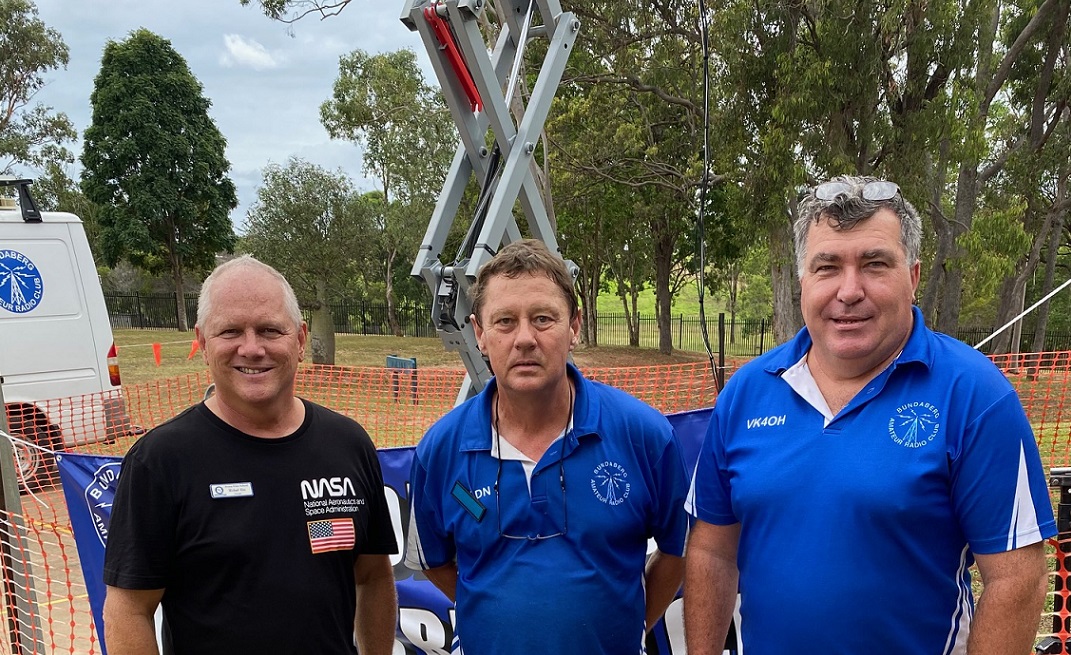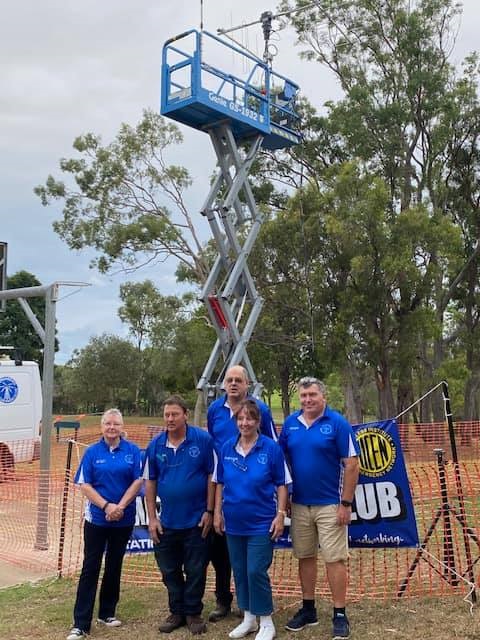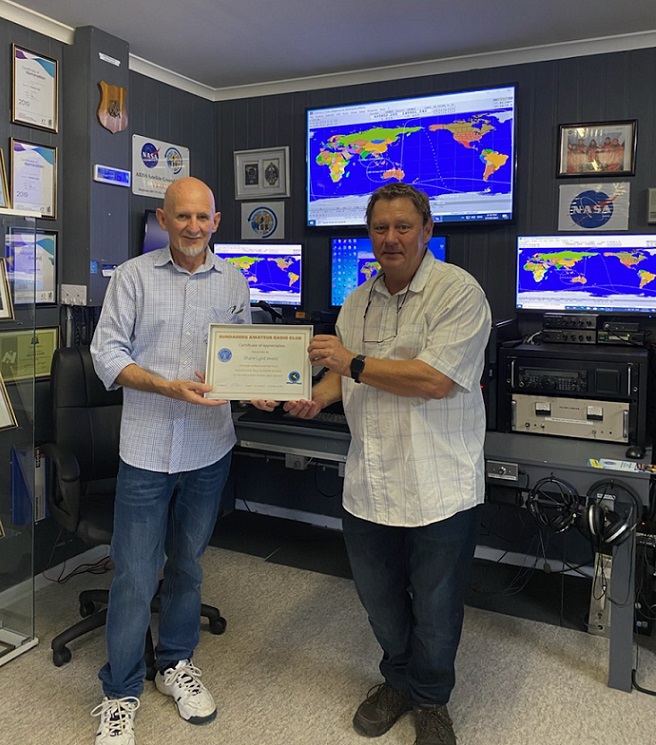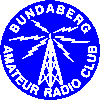Linking the ISS with Avoca State School
March 2021 the club worked with the Avoca State School as part of the ARISS Educational Outreach Program.
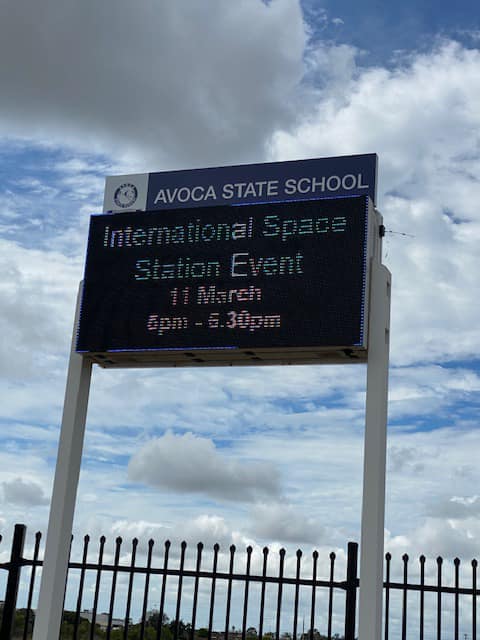
ARISS is the Amateur Radio International Space Station project and is a joint venture bringing together the astronauts and cosmonauts aboard the ISS, with school children all over the world. This is the Wikipedia link.
Many astronauts hold amateur radio licences and willingly give up some of their precious spare time to chat with 'earthlings'.
The project is coordinated by NASA through the ISS Ham Radio Project as a resource to educate students, teachers and parents about living and working in space. It's part of STEM learning so school systems in many countries take up the offer.
The participating school is required to join forces with their local amateur radio club to apply for a live ISS/Earth chat.
Bundaberg Amateur Radio Club partnered with the Avoca State School and on Thursday 11th March 2021 twelve enthusiastic students chatted with Astronaut Colonel Mike Hopkins, a licenced amateur with the callsign KF5JG.
We began by forming a partnership
We formulated a plan with with school Principal Michael Kiss, for BARC to buy the equipment and provide the radios, antennas and expertise.
Meanwhile the School would design science classes centred around space, space travel, living in space etc., which would culminate in a study of the International Space Station.
We lodged the application and understood it could be a 12-18 month wait in the queue, however the pandemic of 2020 changed the world, and many schools withdrew their requests.
Our application was fast-tracked and we were allocated a 'window' in March 2021... leaving us a mere 4 months lead time.
It was time for some quick thinking.
Antenna construction got underway

Members began to design and build the satellite tracking antennas.
Behind the scenes we were learning how to operate the tracking software to control the separate antennas.
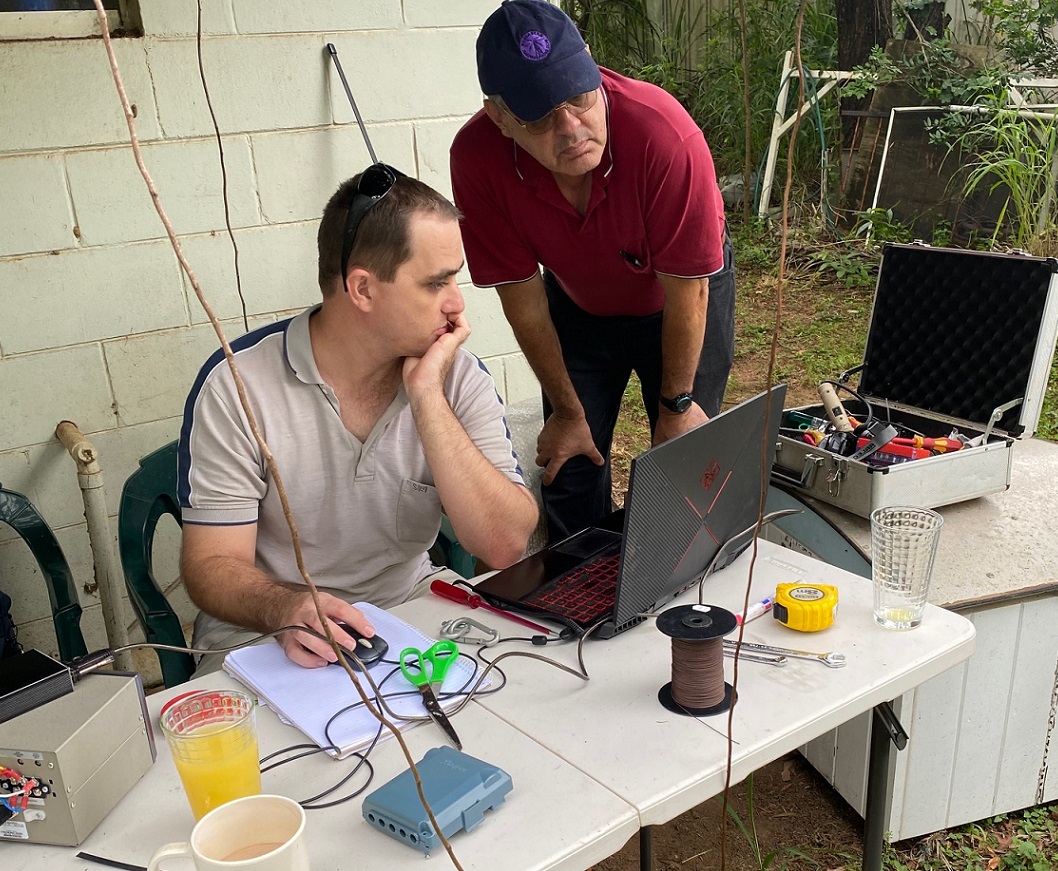
Due to the speed that the ISS is traveling there would only be about 10 minutes of communications time so it was imperative that we tracked for as long as we could hold the signal.
Working Bees
Almost every weekend in the lead up to the event, a band of willing workers created the tripod and antennas.

They tested and configured all the equipment, including the Yaesu Rotator which the club purchased to control the 2 antennas through the vertical and hirizontal planes while tracking the path of the ISS.
Everything had to work if we were to make that contact.
Thanks to Isaac VK4NEU, Keith VK4KDS, Michael VK4JAF, Ross VK4JRO, David VK4DAV, Dan VK4OH, David VK4DN & Peter VK4FPDG for the many hours devoted to this club project.
